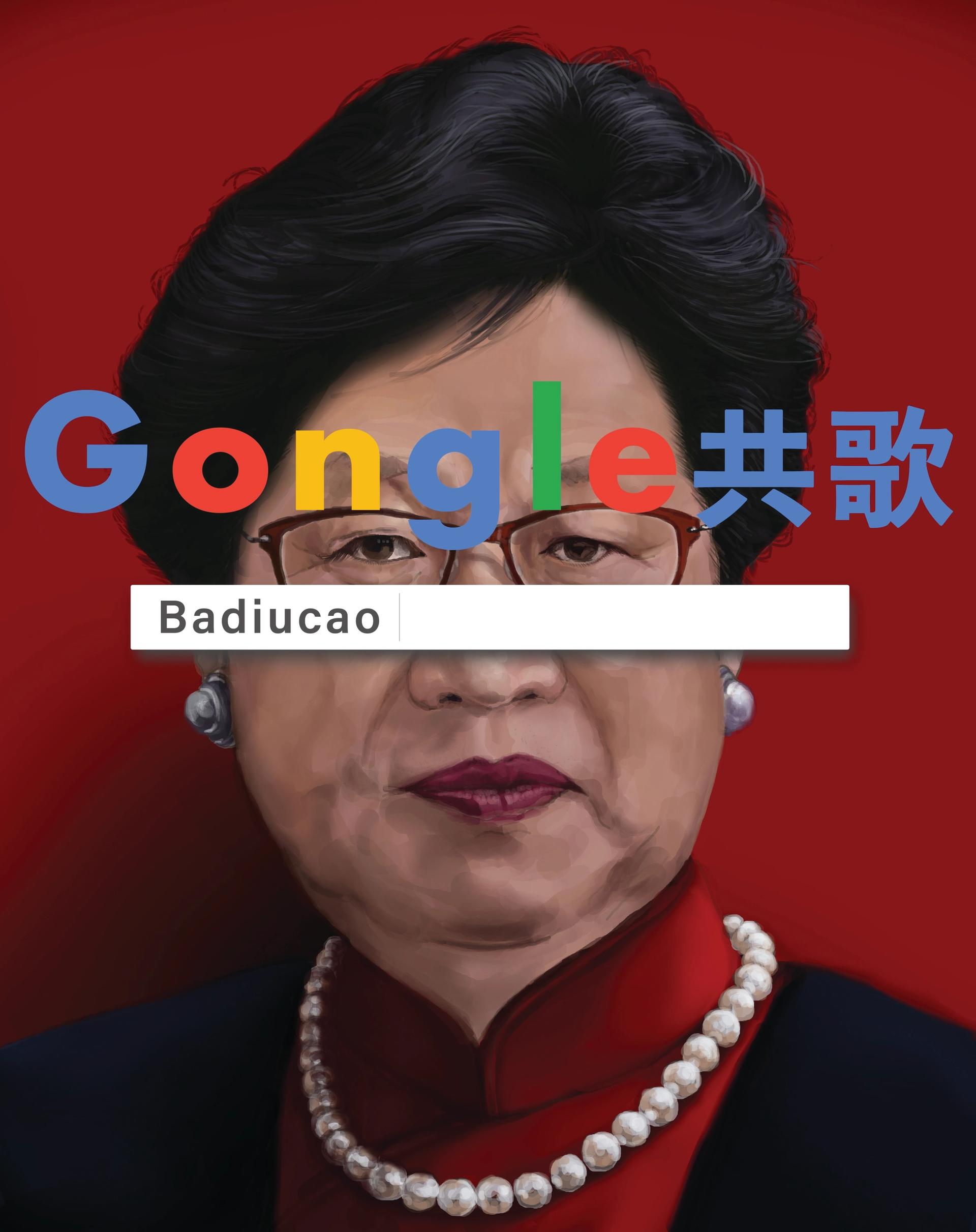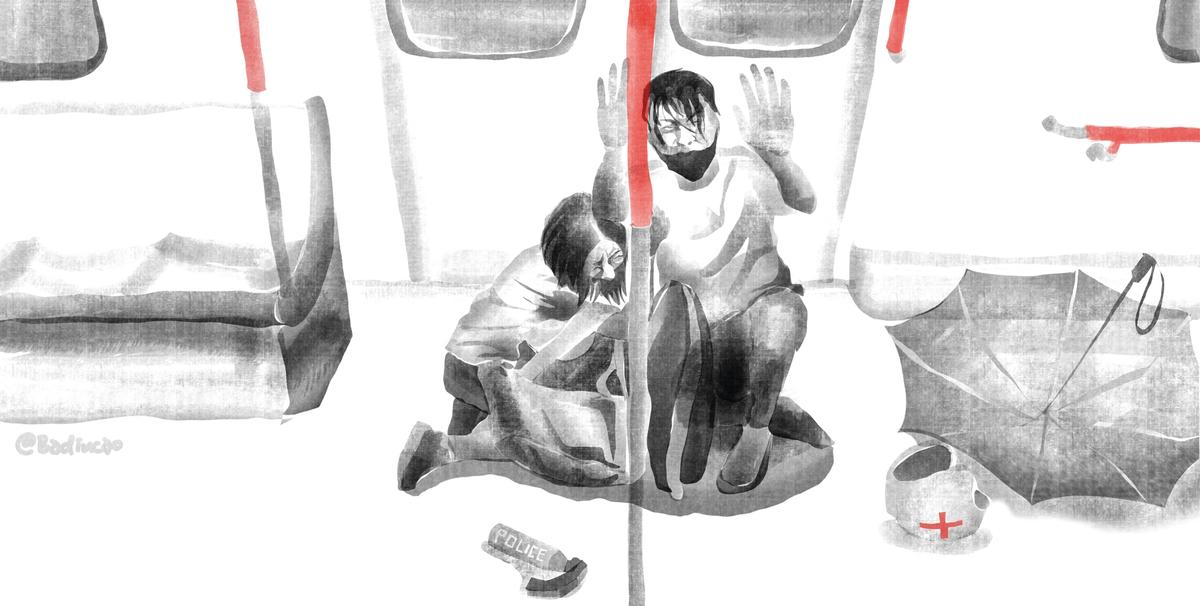
Badiucao holds a flag he created, inspired by the Lennon Wall, during Be Water: Hong Kong vs China in Melbourne Photo © Asanka Ratnayake/Getty Images
The Chinese artist Badiucao’s drawings of the Hong Kong protests have been seen around the world, but he still cannot break into the art world.
At 33, Badiucao has already achieved what many artists of his age have only dreamed of. Images of his political cartoons slamming China’s authoritarian rule and supporting the Hong Kong protests have made headlines in some of the world’s most prestigious media outlets. The public loves his work and shares it enthusiastically on social media. And his activism is well-known: a documentary about him was shown on Australian TV in June, on the anniversary of the Tiananmen Square massacre.
But unlike fellow Chinese artist-activist Ai Weiwei, whose work is widely exhibited internationally, Badiucao is virtually unknown. He wants to sell his works like most artists do, but he does not have a gallery representing him. He also hopes to stage an exhibition to show people that his artistic potential lies beyond hard-hitting political cartoons and drawings, but what could have been his biggest solo show to date was cancelled in Hong Kong last November amid threats to his personal safety. Last month, he tried to stage an artist talk about activism with Hong Kong musician-activist Denise Ho at the National Gallery of Victoria in Melbourne—the closest he has ever gotten to an art institution—but the museum rejected the event for “security reasons”.
People don’t see political cartoons in the sphere of fine art or galleries
“I’m struggling, you are right,” Badiucao says in a phone call from Melbourne, where he lives. “I guess I’m seen more as an opinion leader online rather than an artist. People don’t see political cartoons in the sphere of fine art or galleries.”
Since June, Badiucao has been posting his political cartoons of Hong Kong’s pro-democracy protests on Twitter and Instagram almost daily. His most widely shared works include his visual commentaries on police brutality against protesters. In his adopted home of Melbourne, he has also created a version of the Lennon Wall—a visual symbol of the Hong Kong protests made up of Post-its of people’s messages on the walls across the city, which is named after the original Lennon Wall in Prague.
A new tone
Recently, his artistic style has shifted. When he started political doodling in 2014, just before the outbreak of Hong Kong’s pro-democracy Umbrella Movement, he used eye-catching, contrasting colour blocks and hard, powerful lines inspired by the German Expressionists. Now his tones are softer, he has lost the sharp edges and replaced colour blocks with what appear to be ink brushstrokes.

Badiucao cartoon morphing the faces of President Xi Jinping with Hong Kong's chief executive Carrie Lam © Badiucao
“I want them to look like traditional Chinese ink paintings,” says Badiucao, who was born and raised in Shanghai before moving to Australia a decade ago. At first he published his political cartoons online anonymously until the abrupt cancellation of his Hong Kong show last autumn, when he realised the Chinese authorities already knew who he was. But he did not show his face publicly until Australian TV screened the documentary about him, China’s Artful Dissident, in June.
The shift in his style has been inspired by a stint working as a graphic designer in Ai Weiwei’s studio in Berlin in 2018. “A lot of Ai’s works contain the traits of ancient Chinese culture and antiques. When I was working there, we used a lot of Chinese cultural references,” he says. And despite living overseas and facing harassment from the Chinese authorities, he says he wants to “embrace” his Chinese identity. “I can certainly appreciate the beauty of traditional art forms.”
I feel the art world does not embrace political art properly
Nevertheless, Badiucao seldom has the opportunity to talk about his artistic trajectory. He says the popularity of his political cartoons is a blessing. “It does bring a lot of attention to my messages, but not necessarily to my art. Media interviews are always about current affairs, not about my art from an artistic perspective,” he says. In fact, Badiucao also creates installation, street art and performance, but these works are little known. “I feel the art world does not embrace political art properly. The world sees me as a political cartoonist, but [for me] political cartoon is simply the most efficient way to spread my art,” he says.
Badiucao has not given up; he is still working on plans for a travelling exhibition of his work while continuing to publish his political commentaries through his drawings. “I don’t see my political cartoon practice as isolated from my fine art practice, as political cartoons are not my finished works. They are my visual journals for future projects.”


